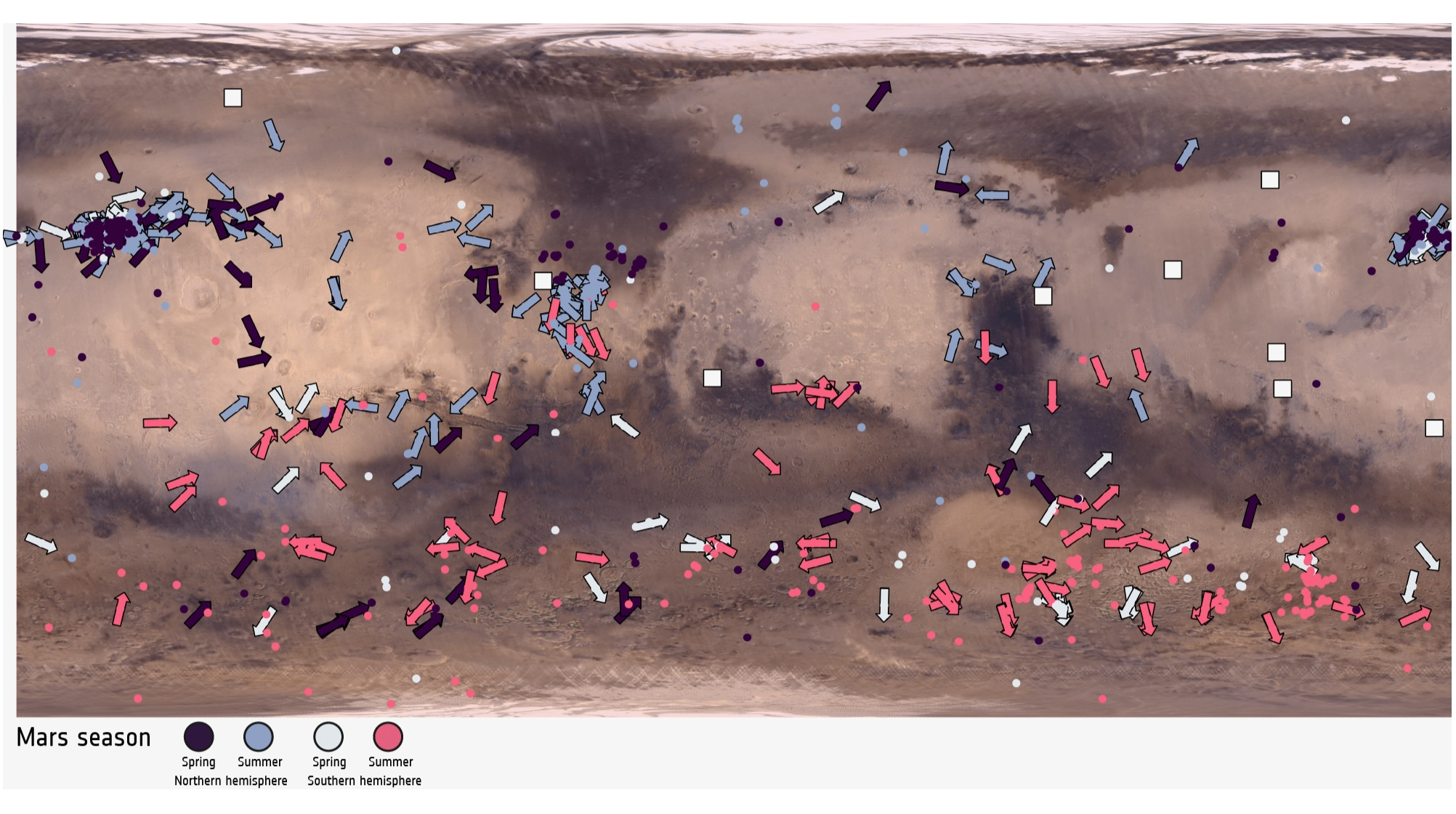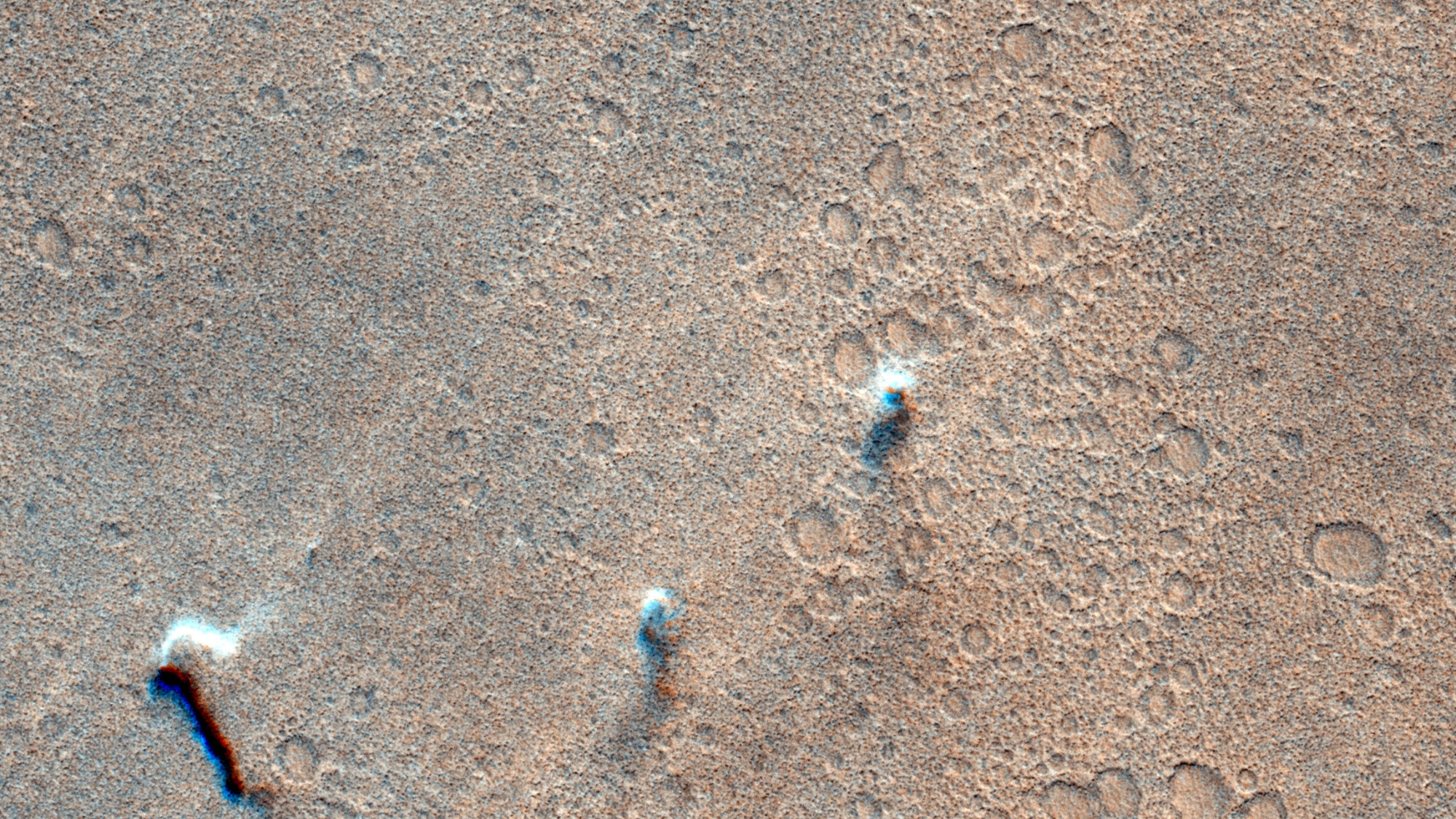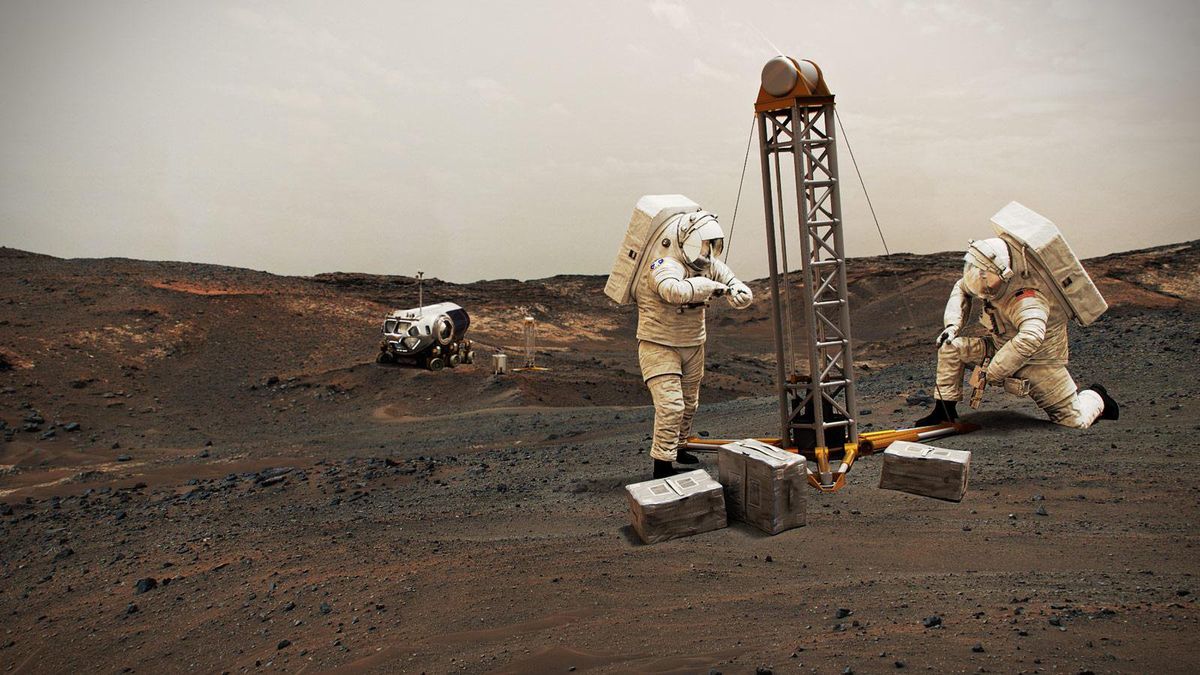Tiny tornadoes of dust whirl across Mars's rusty plains far faster than scientists thought, a new study reveals.
Researchers tracked 1,039 dust devils on the Red Planet captured in two decades of images from European Space Agency (ESA) orbiters. The findings, published Wednesday (Oct. 8) in the journal Science Advances, show that these twisters can reach speeds up to 98 mph (158 kph), far exceeding previous measurements from Mars rovers and climate models.
The results could help scientists plan future Mars missions by accounting for the troublesome dust that coats rover solar panels and whips across landing sites during descent, the researchers say.

"Our measurements could help scientists build up an understanding of wind conditions at a landing site before touchdown, which could help them estimate how much dust might settle on a rover's solar panels — and therefore how often they should self-clean," study team leader Valentin Bickel, from the University of Bern in Switzerland, said in a statement.
To build the catalog, Bickel's team used artificial intelligence to sift through the archives of ESA's Mars Express and ExoMars Trace Gas Orbiter (TGO) spacecraft, analyzing how each dust devil shifted between consecutive frames to calculate its speed and direction.
"Dust devils make the normally invisible wind visible," Bickel said in the statement. "By measuring their speed and direction of travel, we have started mapping the wind all over Mars' surface."
"This was impossible before, because we didn't have enough data to make this kind of measurement on a global scale," he added.
Neither spacecraft was designed to measure wind, but the researchers harnessed a subtle quirk in the orbiters' cameras to do so. When the probes combine multiple views or colors to create a single image, tiny color offsets — caused by seconds-long delays between camera channels — sometimes appear, and are normally dismissed as image noise.
Because each channel is captured a few seconds apart, anything moving across Mars, such as clouds or dust devils, leaves a faint but measurable shift between frames. By analyzing those shifts, the team determined how far and how fast each whirlwind traveled. This way, the team "turned image noise into valuable scientific measurements," Bickel said.
The new catalog also shows that these Martian whirlwinds are often swept up from the planet's dust-covered plains such as Amazonis Planitia, the new study notes. They appear most frequently during daytime in spring and summer, last only a few minutes, and peak between late morning and early afternoon, marking a rhythm familiar to scientists studying dust devils on Earth.
"Now that we know where dust devils usually happen, we can direct more images to those exact places and times," Bickel said in the statement.
Unlike on Earth, however, where rain washes dust from the air, Martian dust can linger for months. Understanding how and when it's lifted from the surface is key to predicting the planet's weather and long-term climate.
The new data, collected from across Mars in a way that rovers and landers alone couldn't achieve, could help refine atmospheric models and improve future weather forecasts, the statement said.
"Dust affects everything on Mars — from local weather to how well we can take images," Colin Wilson, ESA project scientist for both Mars Express and TGO, said in the same statement. "It's difficult to overstate its importance."
.png)
 German (DE)
German (DE)  English (US)
English (US)  Spanish (ES)
Spanish (ES)  French (FR)
French (FR)  Hindi (IN)
Hindi (IN)  Italian (IT)
Italian (IT)  Russian (RU)
Russian (RU) 









Comments